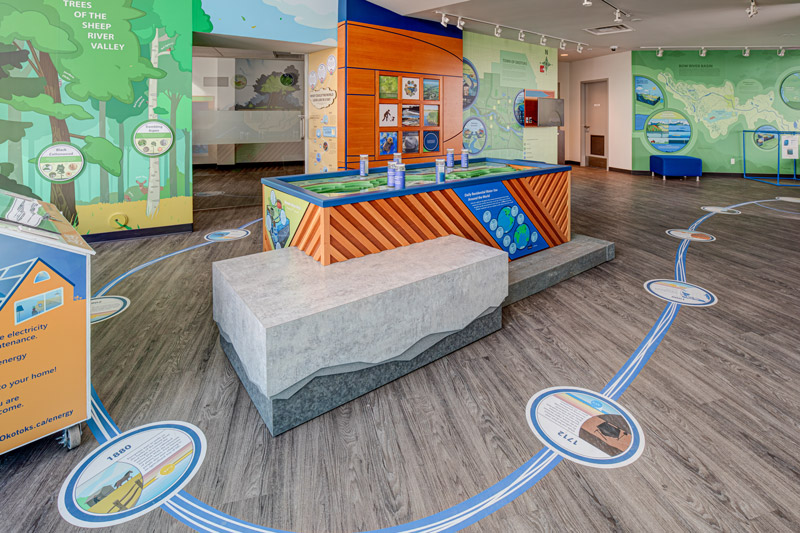
Museums have a rich history spanning hundreds, even thousands, of years. They’ve served as repositories of art and artifacts, enlightening and inspiring generations on an endless variety of topics. If you recall childhood visits to museums or galleries on school trips, chances are there’s a specific item or story that left a lasting impression. But let’s be real, there’s also a good chance you found yourself drifting off into daydreams about lunch amidst the endless rows of artifacts and plaques. Hey, it happens to the best of us. However, you may have noticed since your last school field trip is that museums have shifted towards offering multiple interactive educational displays and experiences rather than just cases of artifacts. These opportunities have expanded significantly with the use of digital technology, offering even more creative and immersive learning approaches.
While incorporating interactivity in these spaces is not a brand new concept, the way technology continues to quickly shift and develop has created new ways to experience galleries, museums, and interpretive centres that are unique to each visitor. We’ve built dozens of interactive exhibits over the years; here’s a few interactive digital elements that we’ve incorporated into custom displays that continue to grow and evolve.
What Are Interactive Exhibits?

Interactive exhibits prompt visitors to actively engage with displays to yield a specific outcome. These exhibits use multi-sensory elements to captivate users, offering both enjoyment and educational value. By leveraging user participation, interactive exhibits facilitate impactful and meaningful learning experiences. Interactive exhibits can be mechanically triggered with user participation, such as panels that open, objects that can be moved, or some of visible change. Interactive exhibits can also be digital and triggered by combining technology with user interactions.
Features of Great Interactive Exhibits
What Technology is Used for Digital Interactive Exhibits?
Augmented Reality (AR)
Augmented reality (AR) supplements users’ real-world environments with digital sensory information. Unlike virtual reality (VR), which constructs entirely artificial environments, AR overlays visuals, sound, or other data onto the user’s actual surroundings, seamlessly integrating digital and 3D elements. This augmentation can enhance the existing environment or modify elements within it.
Here’s an example: At the Calgary Stampede’s Sam Centre, we crafted a display that hosts an AR photo booth system. Unlike traditional photo booths, visitors could choose from a selection of classic Calgary Stampede posters to digitally insert themselves into. After making a selection, a countdown timer allowed users to pose as they transformed into a chuckwagon driver, bull rider, cowboy, or another iconic role in real-time. As the camera captured the moment, a captivating light sequence illuminated the wall behind the user. Following the photo, guests could embellish their poster with a variety of digital stickers before downloading it to their phones via a QR code. This interactive experience breathed life into historic posters, enabling guests to immerse themselves digitally, creating both a memorable moment and a downloadable souvenir. It also encouraged the creation of user-generated content for sharing on social media, enhancing engagement and extending the experience beyond the physical space.
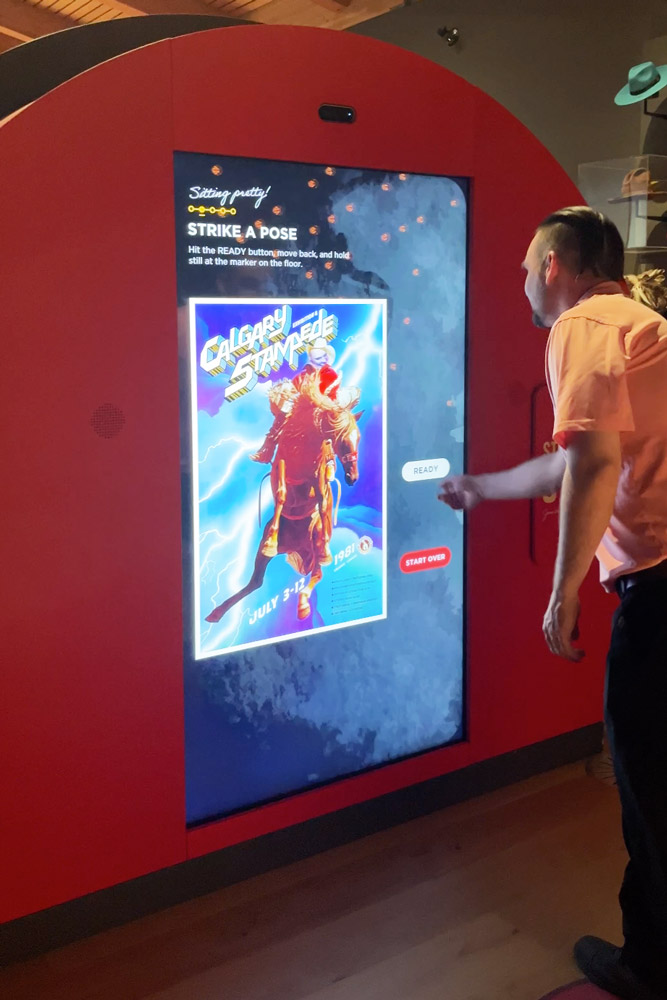
Touch-Screens
In today’s world, touch-screen technology is making its way everywhere from mall directories to fast-food restaurants. However, in museum exhibits, touch screens offer more than just digitized information. When touch screens provide users with options, animations, and other interactive elements that respond to their input, they enhance the experience by encouraging exploration and discovery, triggering additional visuals or information. Touch screens also serve as invaluable tools for wayfinding, improving user experiences through customized directions and search features that enhancing navigation.
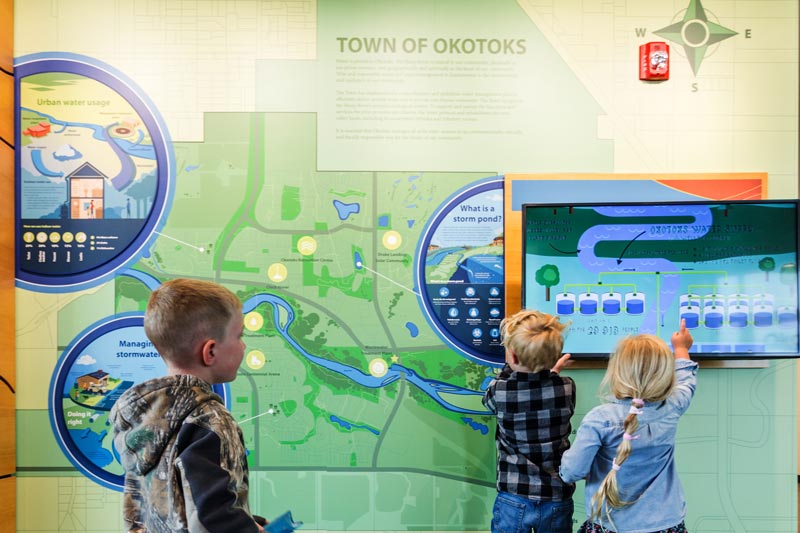
Multimedia Shows
Multimedia shows elevate video storytelling by engaging multiple senses. In 4D cinema, additional elements like vibrations, lighting, and bursts of air fully immerse viewers in the environment being shown. Projection mapping, akin to AR, is a digital technology projecting video onto any surface, even those with irregular shapes. Motion design animates visuals to seamlessly traverse these surfaces, creating a distinct display that can be synchronized with other design elements such as lighting for a truly unique experience.

Take the Stampede Sensations multimedia experience at the Sam Centre as an example. Our team crafted a horseshoe-shaped backdrop using reclaimed barn board for an authentic rustic feel. In the centre of the floor, a circular carpeted logo houses sound transducers, generating vibrations that simulate the thundering hooves and echoing cheers of a rodeo event. Suspended from the ceiling are hundreds of lights, meticulously programmed to synchronize with the video sequence. This is accompanied by surrounding LED lights and bursts of air. This immersive setup goes beyond traditional video viewing, engaging multiple senses to transport viewers directly to the heart of the action on the rodeo grounds.
Sensor Triggers
Sensor triggers range from the simple press of a button that activate sounds, videos, or other effects to touchless options like motion sensors. For instance, standing on a floor graphic can trigger visual displays or sound, while movement tracking devices can mirror visitors’ actions with an AR digital display, offering interactive experiences. Radio Frequency Identification (RFID) technology is another sensor option, utilizing tags and readers emitting radio waves to track and match items. At the YouthLink Police Interpretive Centre in Calgary, the forensics exhibit area showcases this technology. As visitors approach the bugs display, an RFID sensor activates a display case filled with faux maggots, which appear to wriggle and move. This creates both surprise and fascination, particularly among younger visitors. This interactive and immersive approach fosters curiosity and learning in an engaging manner.
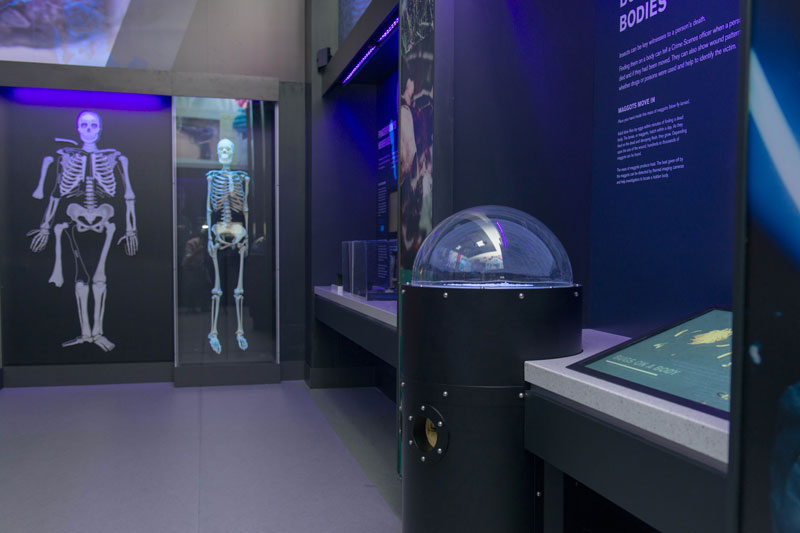
In conclusion, museums are transforming static artifact displays into dynamic hubs of interactive learning experiences powered by technology. This not only enhances visitor engagement but also expands the possibilities for immersive storytelling and education. From augmented reality to multimedia shows incorporating sensory elements, embracing digital innovation creates memorable and impactful encounters with history, culture, and science. As we continue to push the boundaries of technology, the future of museums promises to be even more interactive, immersive, and enriching — ensuring that the magic of discovery and exploration remains alive for years to come!
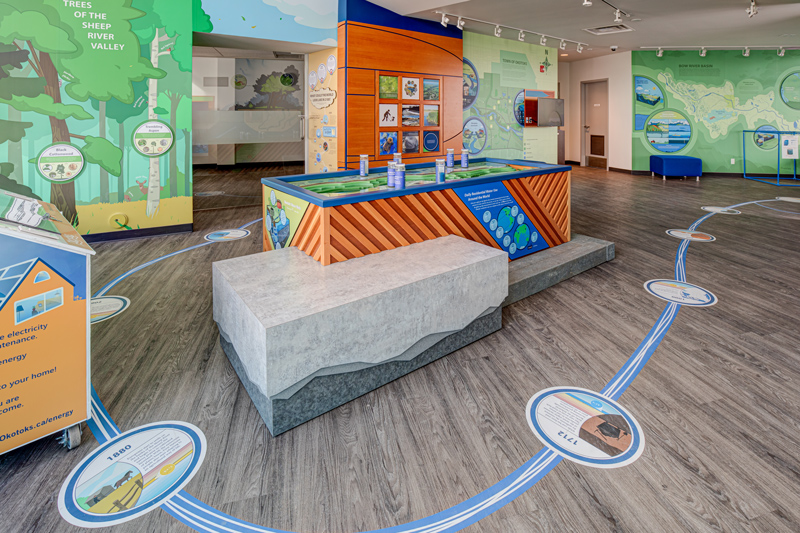
Interactive Digital Exhibit Displays
For decades, our innovative team has integrated state-of-the-art digital technology with custom-built displays. No idea is impossible — chat with us to discuss how we can bring your interactive digital exhibit display vision to life.
